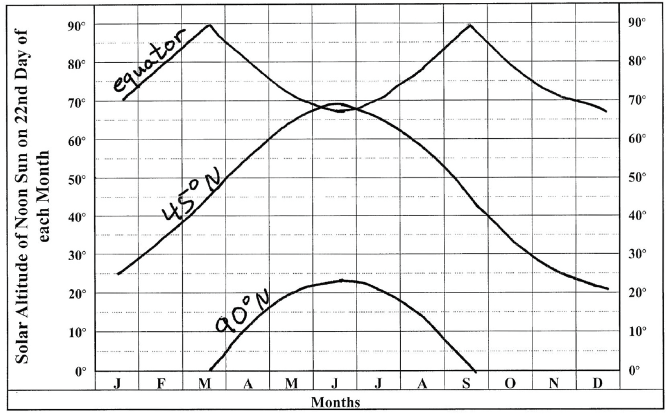On the chart, use the data from Figure 11-2 to plot the altitude of the noon Sun on the 22nd day of each month for the equator, 45° N, and 90° N. Connect the values for each latitude with a labeled line (you may also use a red line for the equator, a green line for 45° N, and a blue line for 90° N). Plot negative angles as a solar altitude of 0°.

Using the completed chart, answer the following questions:
(a) On June 22, at which latitude (the equator or 45° N) is the noon Sun highest in the sky?
(b) Does the noon Sun at the North Pole ever get as high as it is on January 22 at 45° N?
(a) 45° N
(b) No
You might also like to view...
Which statement best describes a compound?
A. a material that is made up of a single type of atom B. a mixture of more than one element C. a material that is made up of a combination of atoms bonded together D. a mixture of atoms E. none of the above
A group of small, lizard-like reptiles among which are the earliest known reptiles:a
lobe-finned fish d. phytoplankton b. placoderms e. protorothyrids c. labyrinthodonts
In which time zone do you live? What is the relationship of this time zone to Coordinate Universal Time (UTC)? Is daylights saving time practiced in your area?
What will be an ideal response?
Which of the following is the conjugate acid of HPO42-
A) H3PO4 B) H2PO4- C) PO43- D) H3O+